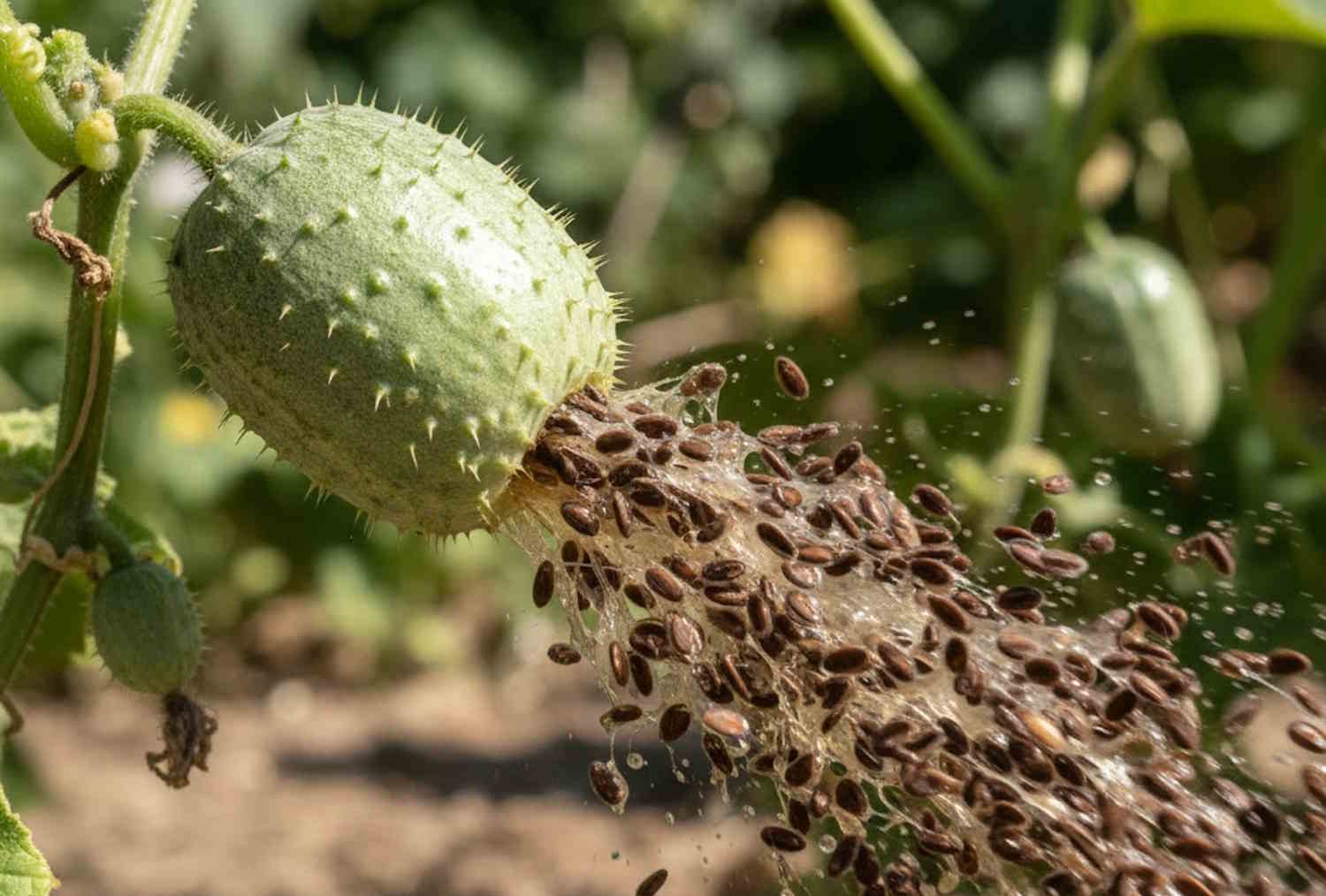Researchers filmed the explosion at 10,000 frames per second: an incredible natural mechanism that now also inspires robotics and medicine

Table of contents
There’s a plant living in the Mediterranean basin, seemingly harmless, that hides one of the most explosive and ingenious strategies in the plant world. It’s called the squirting cucumber (Ecballium elaterium), and it has become the subject of a fascinating study that revealed all the details of its seed dispersal mechanism through actual explosion.
A team from the University of Kiel in Germany presented research at the Society for Experimental Biology Annual Conference in Antwerp, revealing how this plant not only expels seeds with surprising force, but does so with precision aiming, adjusting the launch angle before expulsion. A discovery that leaves you speechless — and not just because of the spectacular explosion.
Why does this plant explode?

©Helen Gorges
Nature teaches: staying too close to “parents” isn’t always an advantage. Plants that drop seeds at the foot of the stem risk competing with themselves for water, light, and nutrients. So, some of them have evolved to shoot seeds as far away as possible.
This is exactly the case with the squirting cucumber. When its water-rich fruit reaches maturity, it transforms into a natural pressure chamber. In an instant, the explosion expels a gelatinous mass containing up to 30 seeds, which are shot at speeds exceeding 29 mph (47 km/h). A mechanism as efficient as it is delicate. Everything must happen at the right moment, without compromising the integrity of the mother plant, as explains Helen Gorges, doctoral candidate and study author:
Dispersal must be effective but controlled. Various factors must cooperate perfectly to prevent the fruit from exploding too early.
A random explosion? Far from it. Researchers discovered that in the final days of ripening, the small fruit stem — called the peduncle — changes shape, slowly straightening until it reaches an inclination of 53° from the horizontal.
It’s no accident: according to calculations, the ideal angle to maximize shooting distance is 50°, considering height from the ground, seed mass, and air resistance. In practice, the plant adjusts the trajectory like an archer before releasing the arrow.
To reach these conclusions, the team combined 3D computer microtomography with high-speed filming at 10,000 fps, managing to capture what’s impossible to see with the naked eye:
The explosions happen in just a few milliseconds, but by slowing everything down we could see every detail.
Seeds that fly like projectiles and “glue” the future to the ground
The footage shows seeds exiting always from the same end, all oriented with the tip forward. A strategy that reduces air resistance and prevents seeds from colliding with each other during launch.
Once landed, other evolutionary marvels come into play: the seed’s outer coating, in fact, releases a mucilaginous gel that, as it dries, becomes sticky like natural glue. This helps seeds adhere to the soil, preventing them from being swept away by wind or rain. Additionally, the gel retains moisture, promoting germination even in the arid and rocky soils where the plant grows.
By analyzing the fruit’s internal tissues with micro-CT, researchers discovered that the squirting cucumber accumulates water and stiffens cell walls, transforming into a small “hydraulic accumulator“. When pressure exceeds the resistance limit of the tissues, the fruit splits at its weakest point, near the peduncle, releasing all the energy in a fraction of a second.
A mechanism as precise as it is powerful, made possible by an extraordinary mix of biomechanics, hydraulic pressure, and adaptive strategies.
From nature to technology
What science has discovered doesn’t stop at the plant world. The squirting cucumber’s mechanisms are already inspiring soft robotics and controlled medical delivery systems.
The concept of elastic energy stored in a gel is the same underlying hydrogel actuators for microsurgery or for ultra-localized drug delivery systems. And there’s more: self-separating materials and self-sealing coatings are a potential basis for new biocompatible and sustainable devices, as Gorges emphasizes:
There are many possible applications in medical and technological fields. From soft robotics to drug delivery devices: we’re learning a tremendous amount from plants.
Source: Eurekalert – Kiel University
